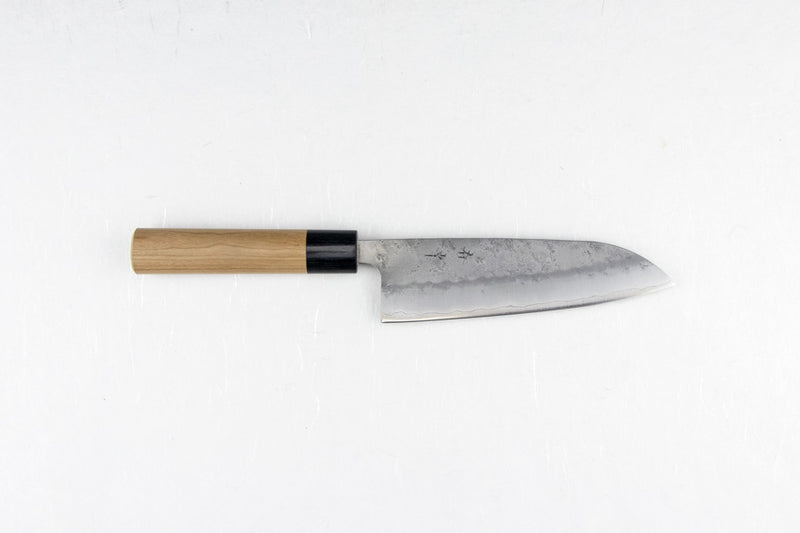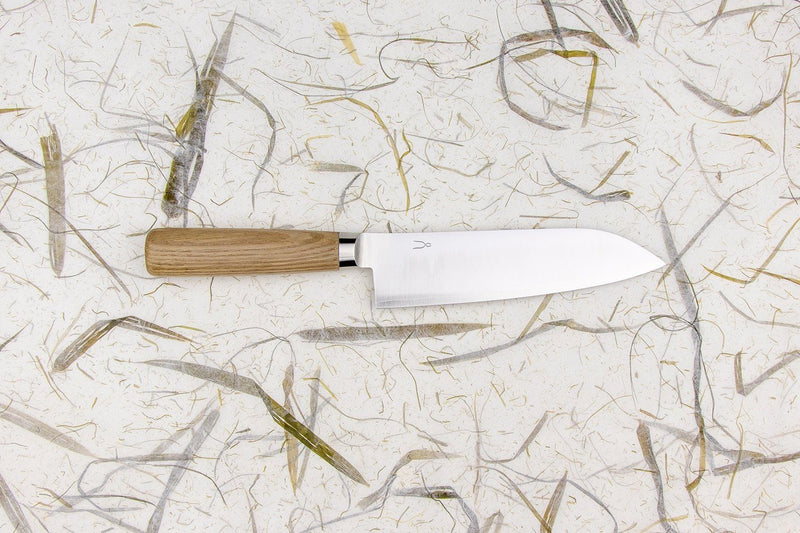What is a Santoku, and Why do I Need One?
Are you new to the world of Japanese knives? Do you need one knife to do it all? Baby, you need a santoku.
If you’ve heard anything at all about Japanese kitchen knives, odds are that you’ve heard the term "santoku". The santoku is easily the most popular Japanese knife shape. It's so popular that even European knife makers have made their own version of them. Can you really blame them? This knife rocks! It truly is the jack-of-all-trades in the kitchen.
What is a Santoku Knife?
The word Santoku translates literally to "three virtues" or "to solve three problems". Interpretations vary, but folks say it covers fish, meat and vegetables, or rocking, chopping and slicing. Either way, it covers all of your bases. I see this knife as being the perfect gift, or a great first-knife in a household.
Santokus have a unique shape, with a profile that makes it good at just about everything. I’ve often said that the santoku is like the lovechild between a gyuto and a nakiri because it excels equally at cutting both protein and vegetables.
What's the best Santoku?
Most santokus are around 165-180mm in length. This is the perfect size for most tasks. While you can certainly find ones that are shorter and longer, they are much less common. The relatively short blade, compared to a chef's knife, feels more comfortable in the hands of a beginner; It is easier to control and less intimidating than a full-size chef's knife. This also makes them popular for folks with smaller hands, however their blades are a bit taller than that of a gyuto, so they're still perfectly comfortable and easy to use for anyone with larger hands. There’s tons of room between the handle and cutting board for beefy knuckles!
As I mentioned earlier, the profile of the knife is what makes it so versatile. It shares the flat heel that you would find on a nakiri, so you can slide the knife gently through your veggies for a clean cut, without them still being tied together like a paper doll. About halfway down the blade the edge starts to gently curve up towards the tip, lifting it up off the cutting board. This means you can also rock with your santoku when mincing garlic or chopping herbs. You could even carve a small roast or a steak with one!
I use my santoku any time I just want to cook a small meal, and I don't need to do a ton of chopping. It’s the perfect weekday cooking knife, and I keep my larger 240mm gyuto as my weekend/big meal prepping knife.
If it's time for you to grab a santoku, I've picked out our top 5 santokus so you can find the right one!










